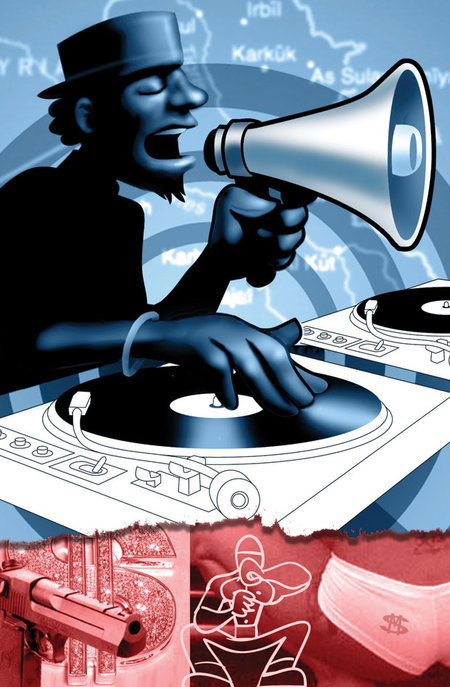
Another good Chang article. Lots of good insight on the potential for change and reform that hip-hop creates. Link
Paul Porter, cofounder of the media-justice think tank Industry Ears, saw these changes firsthand as bet’s hip-hop video program director. “We used to see the same storyboard of sex, drugs, rims, and attitude,” he says. “We used to vote out some of these videos all the time, and up to 2000, there was a point when we used to blur out champagne bottles. And then it came down to the line where—I’ll never forget when [then-bet owner] Bob Johnson called me—this is 1999—I was having some issues with Def Jam executives, and he said, ‘Play the video. Def Jam spent $3 million. Just play the video.’ And that’s when I knew it had gone haywire.”As Jay-Z, who is now Def Jam’s ceo, famously rapped, “I dumb down for my audience and double my dollars. They criticize me for it, yet they all yell ‘Holla.'”
In Beyond Beats & Rhymes, documentary filmmaker Byron Hurt’s “loving critique” of hip-hop’s misogyny and homophobia (which aired on pbs), Hurt asks unsigned rappers gathered outside an industry event to audition for him. Their clichéd battle rhymes are predictably bloody, sexist, and homophobic. When Hurt challenges them, they lament that this is the only rap that gets record deals. “The expectations are so well known that the artists conform to them,” says Hurt.
As Hurt notes, by embracing the image of black men as oversexed thugs, corporate rap perpetuates age-old stereotypes. There is, Simmons acknowledges, “a streak of negativity on the part of some executives. There are some opportunities for short-term success on stereotypical ideas. But that shakes itself out. Artificial artists lose their footing.”
Porter is less optimistic. “If this is the only thing the public hears, that’s what they’re gonna want,” he says. “It’s common sense. If McDonald’s is on every corner, eventually you go into a McDonald’s. Don’t tell me that because it sells, it’s good. Crack sells.”



